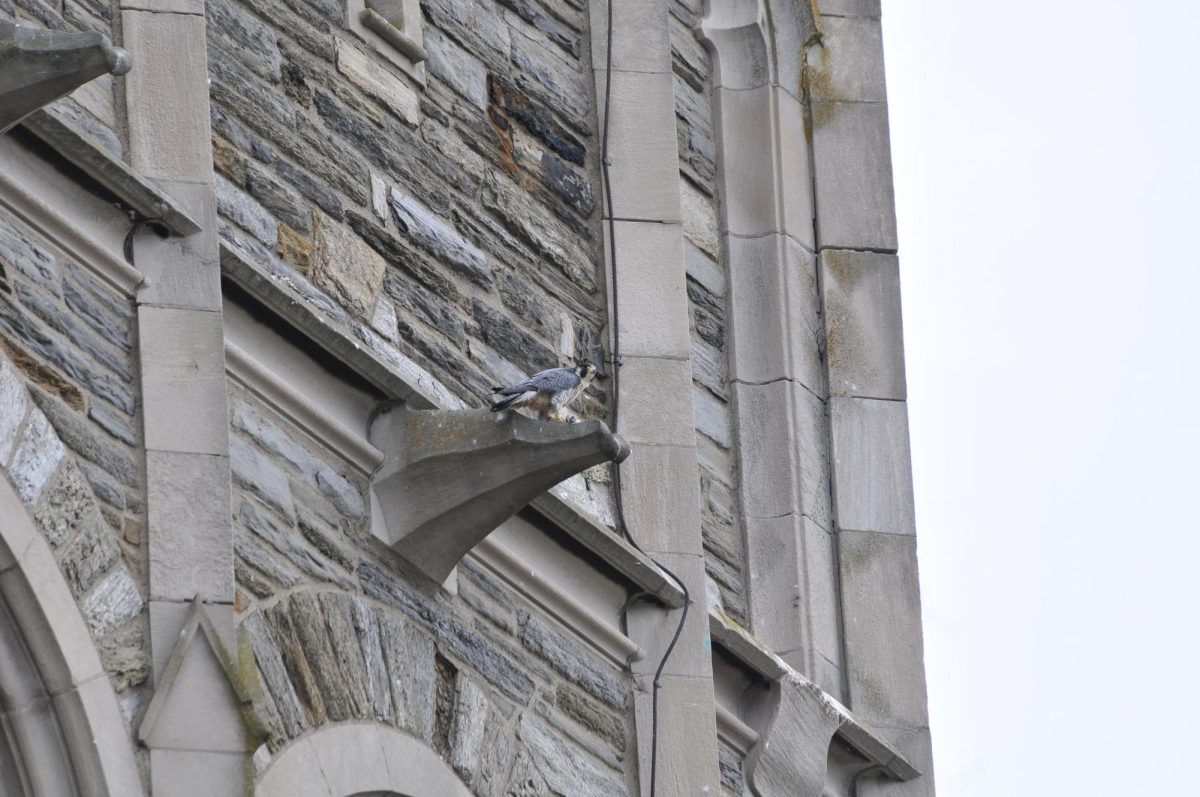 Two peregrine falcons have recently been spotted frequenting different spouts on top of Barbelin Hall. First glimpsed towards the end of the spring 2024 semester, they seem to enjoy the view of students and can often be seen dining while perched in the area.
Two peregrine falcons have recently been spotted frequenting different spouts on top of Barbelin Hall. First glimpsed towards the end of the spring 2024 semester, they seem to enjoy the view of students and can often be seen dining while perched in the area.
Peregrine falcons are some of the many birds affected by dichlorodiphenyltrichloroethane (DDT), an insecticide that causes damage to bird eggs. As such, these birds were listed as endangered for many years in Pennsylvania. Due to the efforts of conservation and environmental groups like the Peregrine Fund, as well as efforts from local communities, the population of these birds recovered. Peregrine falcons were taken off the federal endangered list in 1999 and Pennsylvania’s endangered list in 2021.
This process was greatly moved along by the use of something called “hacking.” Unlike computers, hacking in the environmental sense refers to the process of assimilating animals back into their natural habitat while limiting the amount of human interactions they have. Peregrine fledglings reintroduced into the environment through hacking typically have bands on their legs featuring tracking numbers so data can be collected to ensure the safety and vitality of the species. Another way data can be kept on these birds is through the use of cameras in areas where they have nested.
Due to the migratory nature of many peregrine falcon populations and the recent revitalization of their species, peregrine falcons have been nesting on human-made structures in recent years, such as our very own Barbelin Hall. Having birds nest on structures like buildings or bridges is not always ideal, as it can cause their eggs to be vulnerable to humans or diseases in the area. Luckily for our avian friends, it is not their nesting season (mid-April to May), so they are safe to continue perching on Barbelin Hall as our very own wildlife ambassadors.















































Jamie • Oct 13, 2024 at 6:38 pm
Great photo!!